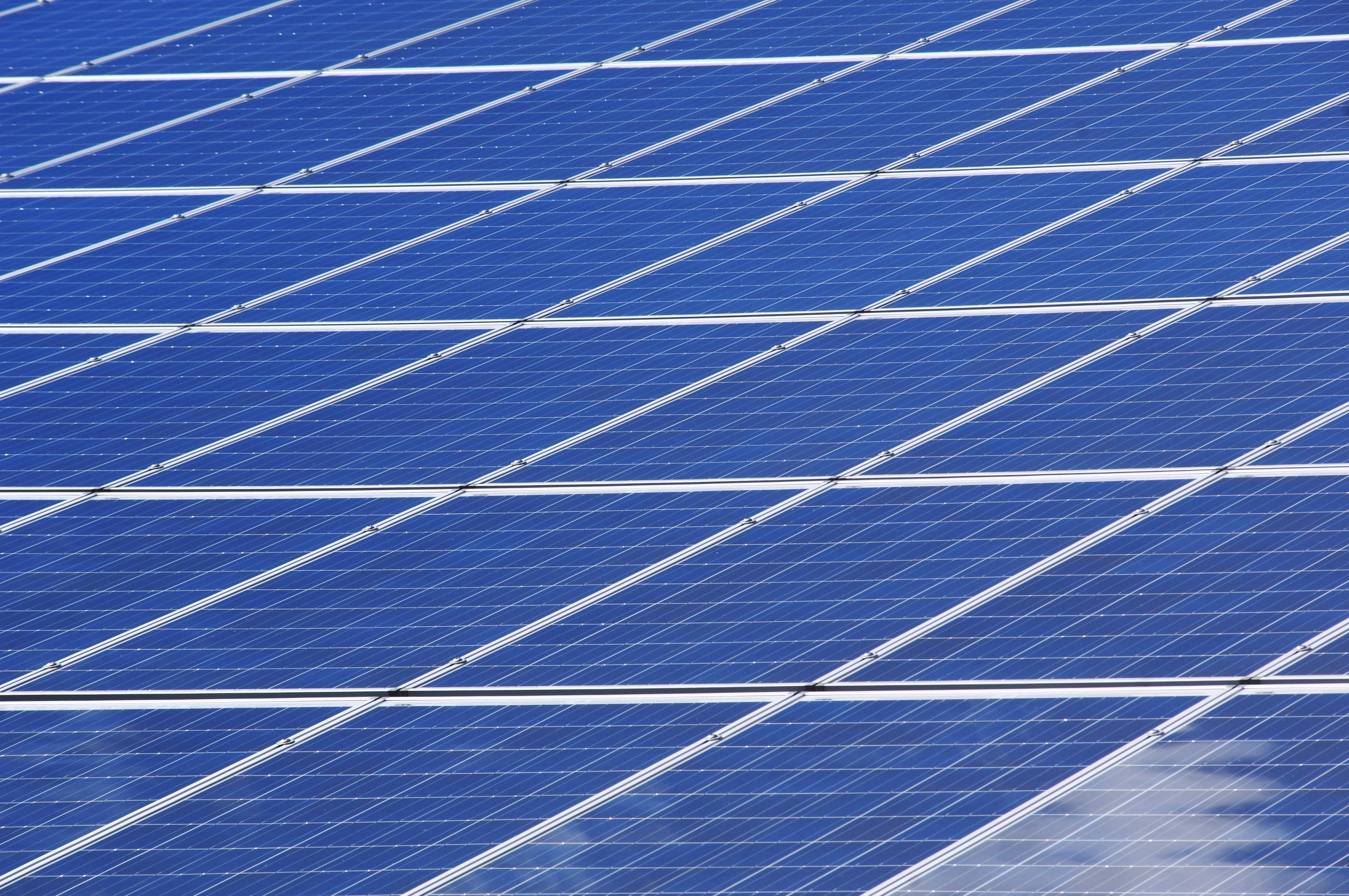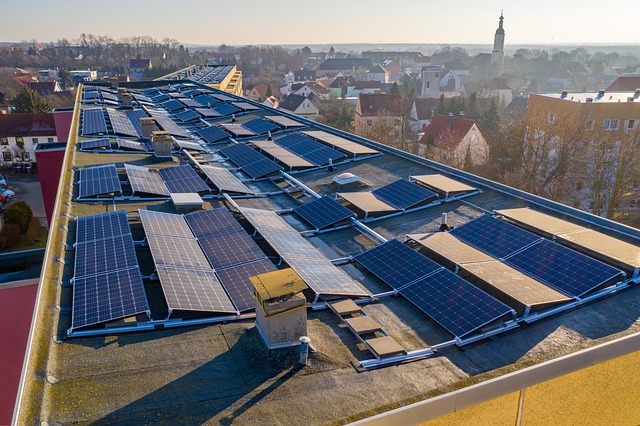Table of Contents
With the use of cutting-edge technology, solar energy is transforming power sources for homes and businesses by offering a sustainable and competitive substitute for traditional energy sources.
How Solar Panels Work
Solar panels use semiconductors to turn sunlight into electricity. When electrons are liberated from solar cells, the photovoltaic effect produces electricity. Several interconnected cells make up these panels; silicon-based cells are frequently used for optimal durability and efficiency.
The direct current (DC) generated by the panels must be converted into alternating current (AC), the typical type of electricity used in the majority of homes and businesses, by an inverter in order for the electricity to be usable. Furthermore, some systems have battery storage to store extra energy produced during the day, giving them a dependable power source even in the absence of sunlight. It is simpler to appreciate the cutting-edge technology underlying solar energy when one is aware of these fundamental elements and procedures.
Types of Solar Panels
There are numerous varieties of solar panels, and each has unique benefits and drawbacks. Because monocrystalline panels use high-purity silicon cells, they are the most effective and have the largest power capacity. Although these panels are more costly, they perform better, particularly in settings with limited space. Although polycrystalline panels, which are composed of silicon crystals, are less effective than monocrystalline panels, they are more readily available and simpler to manufacture, which makes them a popular option for residential installations.
Another choice is thin-film solar panels. One or more layers of photovoltaic material are deposited onto a substrate to create these panels. They can be incorporated into a variety of surfaces, such as windows and roofs, and are lightweight and flexible. They are less efficient than crystalline panels, though. Bifacial panels are also becoming more and more popular. Particularly in areas with highly reflective surfaces, such as snow or sand, these panels&8217; ability to capture sunlight from both directions increases their total energy output. Customers can choose the best solar technology for their needs by being aware of the various types.

Benefits of Solar Energy
There are many advantages to using solar energy for both people and the environment. The substantial decrease in electricity costs is one of the main benefits. Homeowners and businesses can significantly reduce their dependency on expensive grid electricity by producing their own power. Furthermore, a lot of governments offer rebates and incentives, which further lowers the cost of solar installation.
Additionally, solar energy is good for the environment. It is a clean and sustainable energy source because it emits no greenhouse gases or air pollutants. In addition to improving overall air quality, this pollution reduction aids in the fight against climate change. Additionally, solar energy encourages energy independence, enabling nations and areas to improve their energy security and lessen their reliance on fossil fuels. Installing solar panels can also boost employment and the economy. Jobs in manufacturing, installation, and maintenance are created by the rising demand for solar technology. In conclusion, solar energy offers a wide range of advantages that help create a more sustainable and clean future.
Challenges in Solar Power Adoption
The use of solar energy is fraught with difficulties, despite its many benefits. The initial installation cost is one of the main challenges. Even though solar technology has become much more affordable in the last ten years, some consumers may still find the initial outlay to be prohibitive. Furthermore, although rebates and incentives aid in reducing these expenses, the amount and accessibility of financial assistance can differ significantly by location.
Solar power&8217;s sporadic nature presents another difficulty. The fact that solar panels only produce electricity when the sun is shining can be an issue on overcast or dark days. In order to maintain a steady supply of energy, this variability necessitates the use of backup power systems or additional energy storage solutions. Solar panels&8217; effectiveness is further complicated by the fact that a number of factors, such as dirt, shade, and orientation, can affect how efficient they are. There are also legal and technical obstacles to integrating solar energy into the current grid infrastructure. Planning and a large financial commitment are needed to upgrade the grid to accept decentralized energy sources. The broad use of solar energy depends on resolving these issues.
Advances in Solar Technology
Recent developments in solar technology are increasing the accessibility and efficiency of solar power. The increase in solar cell efficiency is one noteworthy development. To increase the amount of sunlight converted into electricity, researchers are always looking for new materials and designs. For instance, perovskite solar cells have demonstrated encouraging outcomes due to their high efficiency and potential for low-cost manufacturing. Efficiency has also been further improved by the creation of multi-junction cells, which employ several layers to absorb various solar wavelengths.
Additionally, advances in battery technology have led to more dependable and reasonably priced options for storing solar energy, demonstrating the advancement of energy storage solutions. For example, lithium-ion batteries are now a popular option for solar storage due to their increased longevity and efficiency. Additionally, smart grid integration makes it possible to better distribute and manage solar energy, increasing its efficacy and dependability. Another creative solution is the installation of floating solar panels on bodies of water, which improve energy yield by using less land and utilizing natural cooling. These developments are constantly expanding the potential of solar technology, increasing its viability and appeal to consumers.

Future of Solar Power
As technology advances and becomes more ingrained in society, solar energy appears to have a bright future. The expansion of solar energy in developing nations is one area with room to grow. For areas with little access to conventional energy infrastructure, solar power offers a sustainable and scalable solution. These regions can become energy independent and stimulate economic growth by utilizing solar technology.
Another exciting possibility is the incorporation of solar power into commonplace items. For instance, solar panels can be integrated into building materials like windows and roofs using building-integrated photovoltaics (BIPV), which allows them to blend in perfectly with the architecture. This integration optimizes energy production without compromising space, in addition to improving aesthetic appeal. The potential for solar energy to completely transform the transportation industry is further demonstrated by developments in solar-powered vehicles, such as solar cars and charging stations.
Solar power adoption is expected to be accelerated by international agreements and government policies aimed at promoting renewable energy sources and lowering carbon emissions. Solar energy is positioned to be a key component of the global shift to a sustainable future as solar technology develops further and economies of scale reduce costs.


